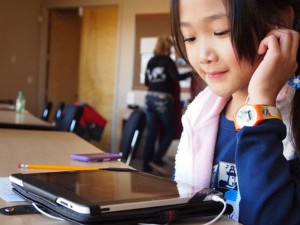Like tiny red candies with a sweet white centre, they glint at me in the corner of my screen. The temptation is irresistible “Oh! Another one for me?” I exclaim delightedly in my mind. “Why thank you very much!” I’m trying to cut back, but my self control is proving lacking when it comes to these little guys. But it’s not candy I’m hooked on; it’s Facebook notifications. A grown woman though I may be (and one who can generally muster up enough restraint not to go overboard on the sugar), I’m still subject to the seductive lure of social media.
Sometimes, social media is like that cool, charismatic friend who coaxes you into going to a secret gig or an obscure foreign language film when you should be doing your taxes – you know you shouldn’t go, but you end up having a new experience, so it’s not all bad. I’ve had many sparks of inspiration from material I’ve discovered while dawdling on Facebook, and this kind of associative doing is becoming an important part of the way both adults and kids learn and work in the modern world. So while social media isn’t all good, it’s certainly not all bad either, and can in fact be a distinct asset in the classroom.
Here are some key terms you should know when it comes to managing – and embracing – social media in the classroom:
Peeragogy
Stanford professor Howard Rheingold coined the term “peeragogy” to describe the modern phenomenon of online self-directed learning and sharing of content. With their like and share functions, social media sites are primed for this kind of informal learning; kids are consuming knowledge and educating their friends without even truly realizing it. We need to bring discussion of peeragogy into the classroom, not only so that we can educate kids effectively in digital citizenship but also so that we can actively encourage the use of social media as a productive tool in formal learning environments too.
Hyper attention
Hyper attention refers to a desire to rapidly switch from activity to activity, the need for high levels of stimulation and a low tolerance for boredom. Social media sites, with their constantly updating livestreams, are perfectly attuned to hyper attentive minds. In contrast, deep attention is characterized by the ability to focus on a single occupation for long periods of time.
Today’s kids have grown up in an era of always on connectivity that has predisposed their minds to function in hyper attention mode as a default. So when we call on them to use deep attention skills in the classroom, no wonder they have trouble focusing! One way of managing hyper attention in the classroom is to practice mindfulness exercises with students; by helping kids become more aware of their own cognitive processes, we can help them tap into deep attention skills when necessary.
Flat Classroom
The idea of the “Flat Classroom” comes from a pioneering project spearheaded by Vicki Davis and Julie Lindsay, which aims to connect and foster communication between classrooms across the world using easily accessible technology, including social media. They use the term “flat” having been inspired by reading Thomas Friedman’s analysis of globalization, The World is Flat: A Brief History of the Twenty-First Century.
Take inspiration from the Flat Classroom Project and use social media to bring the wider world into the classroom, and connect with those outside. For example, setting up a class Twitter account is an excellent way of following current events as they unfold and can be a wonderful springboard for discussion of contemporary media in general. Skype can be used to set up in-class video interviews with professionals in fields relevant to topics being studied. Taking a second look at everyday social media platforms can harness them as learning tools instead of distractions as well as opening up a host of new angles for teaching traditional subjects.
Finding the balance when it comes to social media can be a struggle, but it can also be a stimulating part of an individual’s Personal Learning Network.
What other key ideas do we need to bear in mind when it comes to social media and the classroom? Click below to download your FREE printable digital citizenship posters!
Download My FREE Classroom Posters
By Deirdre Kilbride
P.S. Teachers use Fishtree to plan lessons, find standard-aligned teaching resources, create assessments and see students performance, all in one place! If you’re a teacher, use Fishtree to prepare for your class and understand how well each student is learning. What’s more, it’s safe, secure, collaborative and easy! Try the next generation learning platform or contact us for a demo.
Image credits: nathan’s room 240213 resized (Philippe Put) / CC BY 2.0
